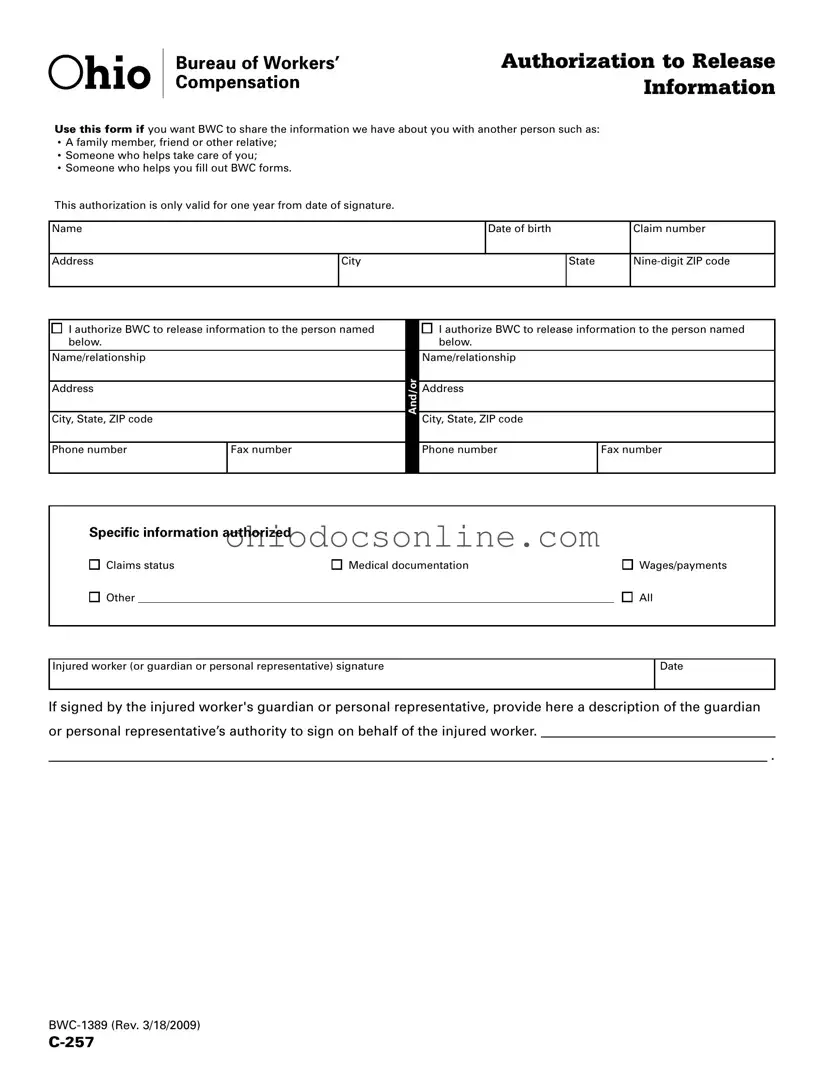Ohio Bwc 1389 Template in PDF
The Ohio BWC 1389 form is an authorization document that allows the Bureau of Workers' Compensation (BWC) to share your information with designated individuals. This may include family members, friends, or caregivers who assist you with your claims or other related matters. It's important to note that this authorization remains valid for one year from the date you sign it.
Open Editor
